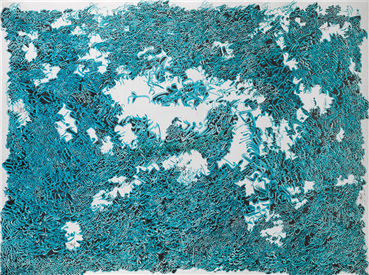About Ghorbanali Ajali
Ghorbanali Ajali, painter, calligrapher, and architect, was born into a cultural and religious family in Mianeh. After his first year of secondary school, he moved to Tehran to continue his education. At the end of secondary school, he entered the Faculty of Decorative Arts and studied interior architecture. He also completed his master's degree in this field at the same university. Along with his university studies, he discovered his connection to the art of calligraphy, which was his father's legacy. He benefited from the lessons of famous professors such as Hassan Mirkhani, Ali Akbar Kaveh, Seyed Hossein Mirkhani, and Ahmad Najafi Zanjani. He devoted himself to learning Nastaliq, Naskh, and Thuluth scripts and spent a period studying the masterpieces of great masters such as Mir Emad, Mirza Reza Kalhor, Mirza Gholamreza, Ostad Abdolmajeed Darvish.
On the other hand, he also pursued painting under the supervision of Kamal al-Molk's students, such as Sheikh and Oliya, as well as Behzad and Katouzian, and was trained in the field of drawing and working with oil paints. Finally, he used his abilities in these two fields in the form of calligraphic paintings; The way he gave the name "Golgasht" to it. His paintings are formed with small and large letters intertwining, and the color red dominates. The letters and words are not legible, but their density and expansion induce a sense of movement and growth and provide a space for search and visual revelation for the viewer and the audience, seemingly referring to this style's name. His letters are drawn in this way and have hints of natural forms. In this sense, his works can be considered a combination between language and nature. In this way, the script and pattern complement each other and connect with the background of the painting. His works have made their way to important international auctions and have been offered and sold in auction houses such as Sotheby's, Bonham's, and Tehran Auction.
Along with his artistic activity, Ajali has also been active in teaching art. He was employed in the education system, working in high and higher education schools. Sometime later, at the invitation of the Faculty of Decorative Arts, he taught various calligraphy methods and remained on this path for twenty-two years.
The Most Expensive Artwork
At Auctions
First Attendance
12 October 2009
# Attendance
8
# Artworks
8
Average Realized Price
17,440 USD
Average Min Estimate
9,787 USD
Average Max Estimate
14,141 USD
Sell-through Rate
100%
Average Growth of Artwork Worth
11.457%
Timeline
In Memory of Hadi Jamali 1 exhibition
1 November
The 13th Tehran- Modern and Contemporary Iranian Art auction
15 January
سومین دوره حراج تهران auction
30 May
Hurouf: The Art of the Word auction
16 December
Contemporary Art / Arab & Iranian auction
20 October
Modern & Contemporary Middle Eastern & South Asian Art auction
11 October
Modern & Contemporary Middle Eastern & South Asian Art auction
2 June
Modern and Contemporary and Latin American Art auction
11 May
Modern & Contemporary Middle Eastern & South Asian Art auction
12 October
